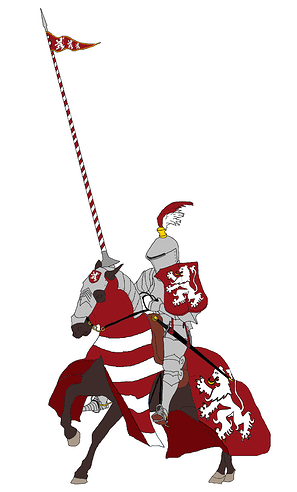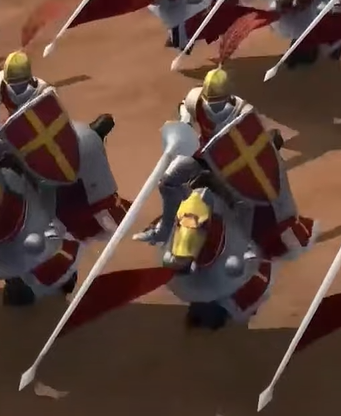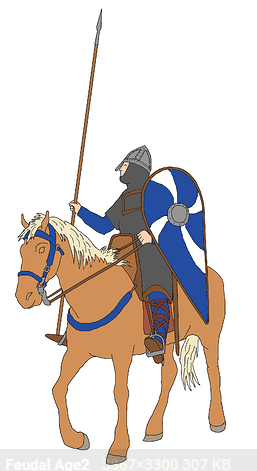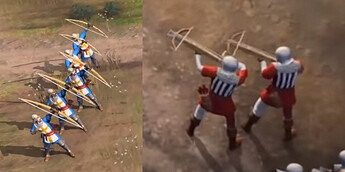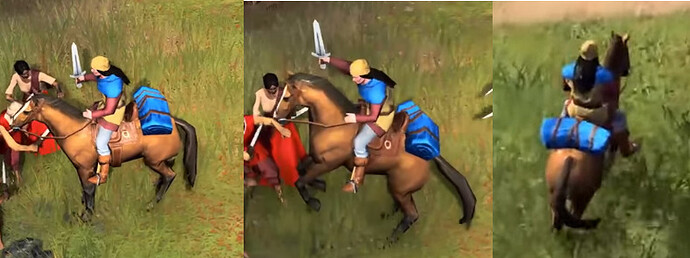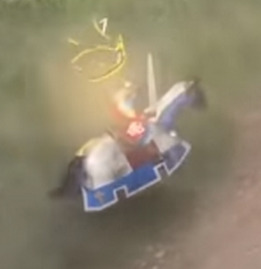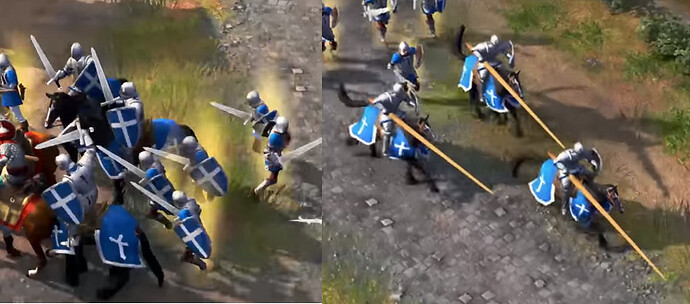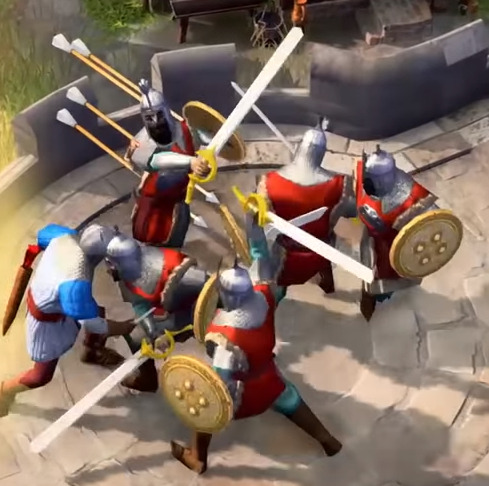Weeks ago I complained about the armors/equipments of the last images/videos being mostly historically inaccurate. I maintain this criticism but also qualify it: the devs actually did some research but for the Late Middle Ages only. The rest is really poor.
I add that 22 years ago, AoE II did a rather good job to this regard given all the limits of those times. Indeed, aside much clichés and fantasy, we could at least spot some historical elements here and there. Some units such as the Teutonic Knight were overally pretty good but there were also more subtle details like the evolution of the shields: kite shield in Feudal Age (Man-at-Arms), heater shield in Castle Age (Long Swordsman), late medieval shield in Imperial Age (Paladin).
In AoE IV, English (and the other European civ of the Norman campaign video) have some units based on late medieval fashions, but when it comes to earlier fashions the only accurate elements I spotted are kite shields and perhaps legwraps in Feudal Age and that’s it. Otherwise they get heater shield (late 12th to 15th century) right in the Dark Age (5th-10th century) while most of their equipments are mere clichés, let alone the Asian civs whose units often have 18th-19th century equipments (details of the anachronisms/flaws here). Given how easy getting informations is nowadays, I would have expected something better.
I am not asking for fully historically accurate equipments though, not needed nor suited to a game such as AoE IV. But I’d just like the armors to be at least historically inspired. If they did some research for the English fortifications, which are partly accurate, why couldn’t they do it for armors too? In a war-oriented medieval video game, armors are a major element which needs some love.
To this regard, AoE II DE new units are exemplary: while they are not historically accurate, they are heavily inspired by historical sources and thus came out pretty nice.
I was expecting something similar in AoE IV.
One argument I heard is that units have to be as readable as possible, which supposedly would not allow substantial historical inspiration/accuracy.
Really? I made a few quick sketches of possible English cavalry units designs just to prove that units can actually be mostly historically accurate while still perfectly readable.
These designs are based upon medieval fashions from Western Europe as a whole and could actually work for many other civs of this area (French, Scandinavians, Italians, etc.). Not all details are accurate but the general appearances always are. They come in two colors (blue and red) so as you can see how different they would look from a player to another.
I - Dark Age Scout
Basically a mounted West Germanic man. He wears a rectangular cloak over a wool trimmed-tunic while his braies are tightened with legwraps. His head is covered with a simple cap (a phrygian cap would probably be more accurate but many people might find it ridiculous). A typical Anglo-Saxon/Frankish sword hangs from a baldric worn on his shoulder. There is no stirrups no spurs and the horse’s tack is very simple.
II - Feudal Age Horseman
“Horseman”, “Knight”, whatever. This figure is mostly based upon 11th century sources such as the Bayeux Tapestry. The horse’s tack is plain again but now the horseman has stirrups and p.rick spurs (“pr ick” word is censored, sorry). He wears a short-sleeved hauberk with integrated mail coif over a simple tunic. His chest is reinforced by an additional mail piece. A conical spangenhelm with nasal protection completes his armor while a huge kite shield painted with typical 11th century pattern provides him a very good protection. His weapons consist in a simple lance and a sword (not visible on the drawing but I’d go for some Oakeshott’s type X with brazil-nut pommel).
III - Castle Age Knight
Typical mid-13th century knight as we can see in many artworks from that period. A full hauberk with integrated coif and mittens as well as mail chausses cover his whole body. Over the coif, a barrel helm with gilded reinforcement cross ; over the hauberk, a silk sleeveless surcoat. His long gilded sword (Oakeshott’s type XII) is knotted with a typical knightly sword belt made of white leather and the end of the scabbard is protected by a gilded shape. His coat-of-arms appears on both his triangular heater shield and his horse’s silk caparison as well as on the pennant of his white lance. His pr.ick spurs are gilded.
IV - Imperial Age Paladin
Basically a historical version of AoE II’s Paladin. The knight is protected by a mid-15th century full armor while his horse has his head protected by a chanfron extending on his neck. Colored feathers on a gilded mount decorate his frogmouth helm while heraldry appears again on the shield, pennant and silk caparison. The decorated lance is very long and its pennant has gold edging. The sword (Oakeshott’s type XVIII) has its pommel gilded and hangs from the waist in a typical 15th century way. A gilded shape completes the scabbard. The rowel spurs are gilded too.
With that helm and lance, it’s more of a jousting equipment though such might have been used in battles too at times.
Keep in mind that those sketches are only examples among countless possible designs.
By the way just changing some of their elements can already make them look drastically different, examples:
Here a totally different design possible for the Castle Age knight (imagine a horse with a caparison bearing the same coat-of-arms as on the shield):
Let’s discuss it
(btw sorry for the guys of the Teutons’ topic, I didn’t find time to answer all your points yet)

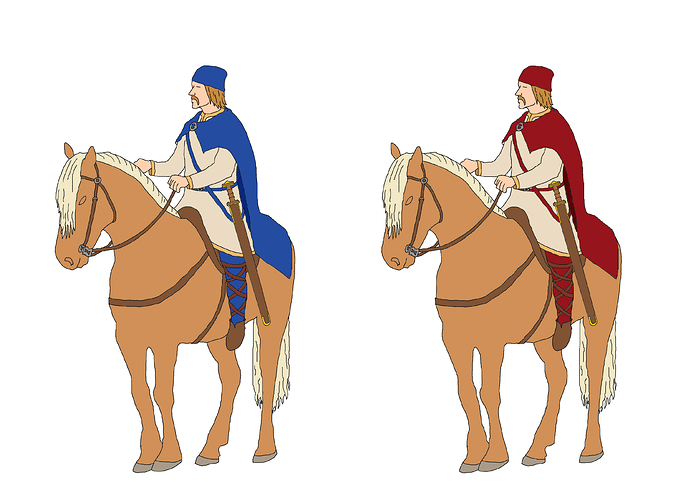
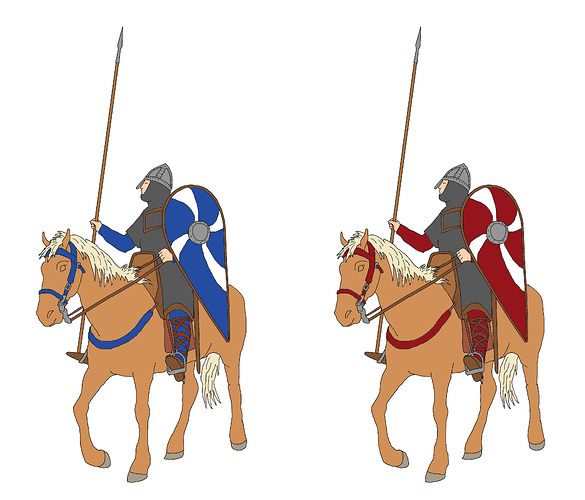

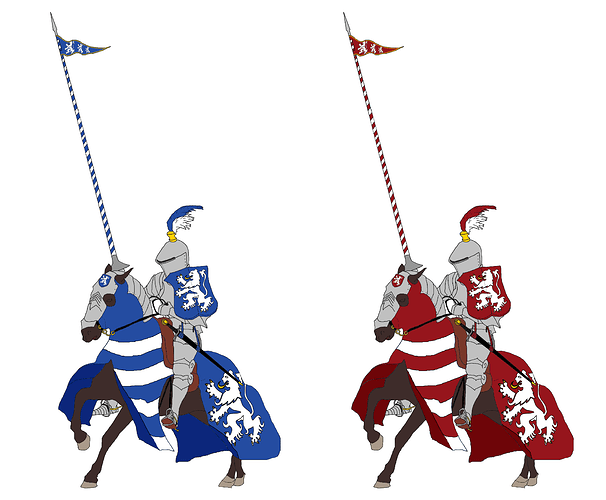
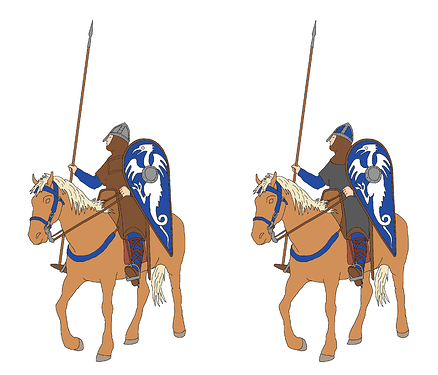
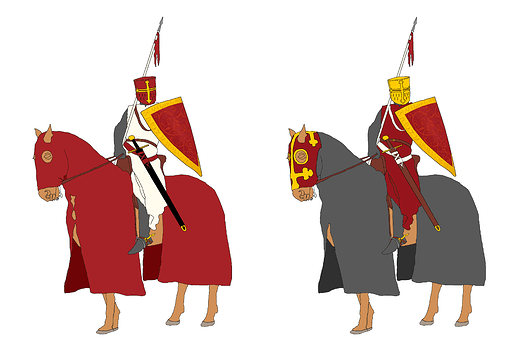
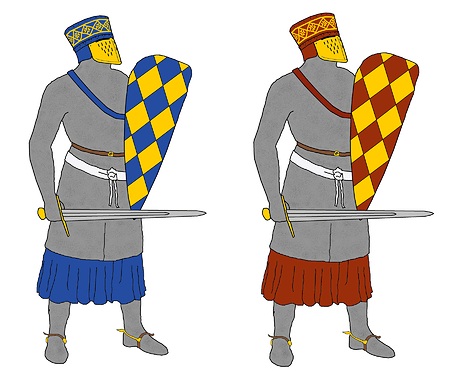
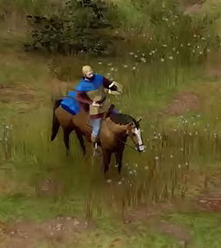


 )
)